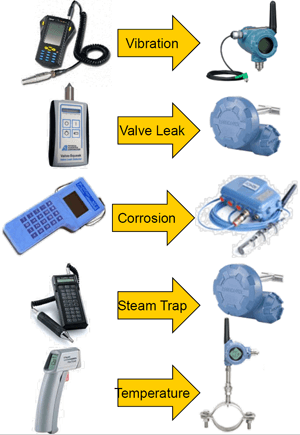I did a quick Google search on the Industrial Internet of Things (IIoT) and it yield about 588,000 search results. You can see quite a bit about on the web and across the social networks that discuss process automation-related topics.
But what is future and what can be done today? Emerson’s Jonas Berge provided attendees of the IoT Asia 2016 conference in Singapore with some practical ideas of what they could do this year to improve process operations productivity, health, safety & the environment (HS&E), reliability & maintenance, and energy efficiency. His presentation, Realize Industrial Internet of Things Benefits in Your Plant Before 2016 is Up, described typical applications in these areas, some of the sensing devices now available to make it possible and the value to process manufacturers and producers that can be attained.
His presentation, Realize Industrial Internet of Things Benefits in Your Plant Before 2016 is Up, described typical applications in these areas, some of the sensing devices now available to make it possible and the value to process manufacturers and producers that can be attained.
In the area of reliability and maintenance, Jonas described how IIoT devices could improve equipment reliability, process availability & integrity and reduce maintenance costs. For example, wireless devices such as vibration sensors can supply data to local or remote monitoring specialists to perform analysis and make recommendations to the plant operations and maintenance staff.
These wireless IIoT devices enable continuous monitoring on more than just the most critical and expensive turbines, compressors and pumps. Today, manual monitoring is perform and these checks are often performed too infrequently to catch problems early before they lead to abnormal situations.
 And, it’s not just wireless vibration transmitters that can help reliability and maintenance practices. Wireless acoustic monitoring can help uncover valve leaks, steam leaks and pressure relief valve releases. Wireless corrosion, temperature and power consumption monitoring can provide early warning and minimize the time operations and maintenance staff spend in hazardous locations performing routine inspections and tests.
And, it’s not just wireless vibration transmitters that can help reliability and maintenance practices. Wireless acoustic monitoring can help uncover valve leaks, steam leaks and pressure relief valve releases. Wireless corrosion, temperature and power consumption monitoring can provide early warning and minimize the time operations and maintenance staff spend in hazardous locations performing routine inspections and tests.
See the presentation for examples of how these pervasive sensing devices can be used in energy efficiency, HS&E and increasing productivity through manual task automation.
IIoT Architecture
Jonas highlighted elements of the IIoT architect noting that many monitoring applications often bypass the distributed control system (DCS). For remote monitoring applications, it’s important from a cyber-security standpoint that these systems be totally isolated from the control and safety systems, so that no access can be gained via remote monitoring.
These remote monitoring systems are non-critical and not used for control and safety functions. They should provide automatic data collection and analysis. Where this data flows over 3G mobile networks, there should be no impact to the process in the event of network congestion and downtime.
Also, this non-process data used for asset condition monitoring is simple, non-confidential equipment diagnostics—the type of data plants traditionally share when collected manually with service providers. Confidential process data is not part of the remote monitoring system.
Common IIoT protocols include IEC 61784-1 Foundation fieldbus and IEC 62591 WirelessHART with well-defined application protocols including standard data types, parameters, blocks and semantics as well as device profiles for process instrumentation and device descriptions.
Business Models
He shared several business models based on three criterion: who owns and manages the instrumentation, who performs the monitoring and who performs the maintenance. This can range from solely the process manufacturer and producers to solely the equipment and service provider and every variation in between.
Jonas shared an example where monitoring was performed on 148 steam traps at a chemical plant in Singapore. This monitoring helped to uncover 34 failed steam traps as well as half of the steam traps that were bypassed. After the monitoring program was initiated, the bypassed traps were reduced to 4%. With repairs performed to leaking traps and a large number put back into service, steam savings were measured to be 7% resulting in significant energy savings.
Beginning on slide 25, Jonas outlines a deployment process. Take a look and see how you can start on the path to improved process operations productivity, health, safety & the environment (HS&E), reliability & maintenance, and energy efficiency.
You can also connect and interact with other industry and wireless experts in one of the Industry groups and Wireless group in the Emerson Exchange 365 community.





